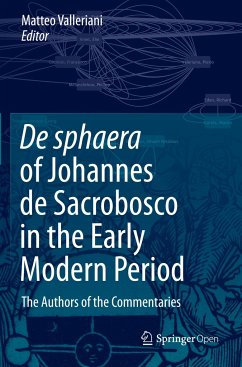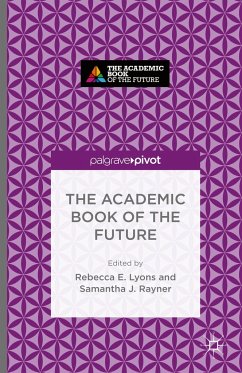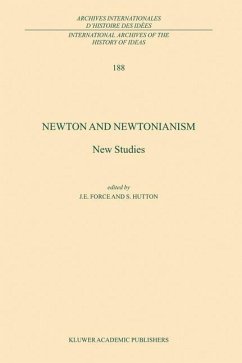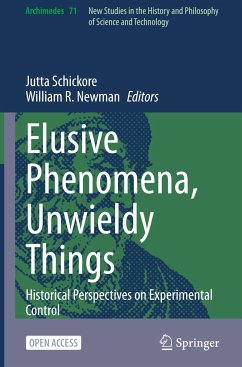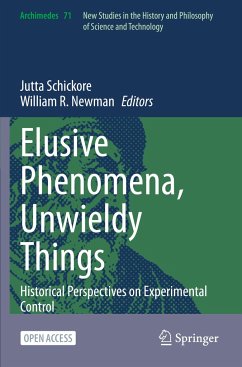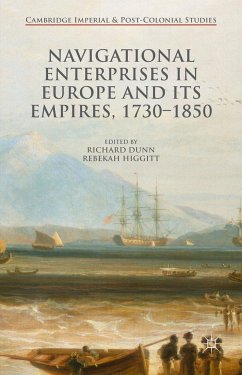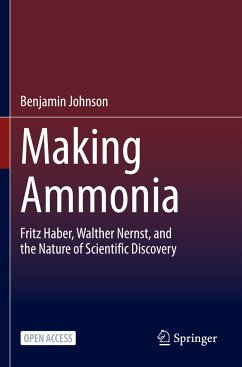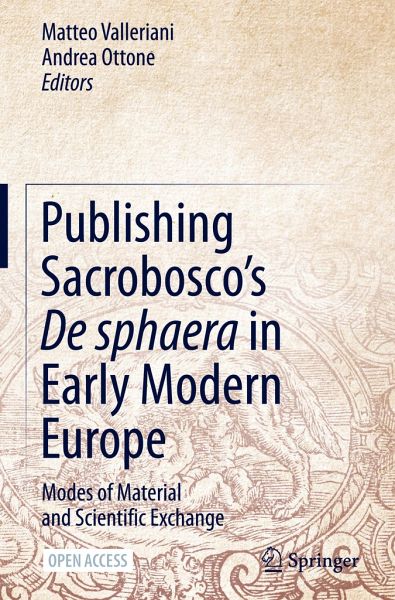
Publishing Sacrobosco's De sphaera in Early Modern Europe
Modes of Material and Scientific Exchange
Herausgegeben: Valleriani, Matteo; Ottone, Andrea
Versandkostenfrei!
Versandfertig in 1-2 Wochen
40,99 €
inkl. MwSt.

PAYBACK Punkte
20 °P sammeln!
This open access volume focuses on the cultural background of the pivotal transformationsof scientific knowledge in the early modern period.It investigates the rich edition history of Johannes de Sacrobosco's Tractatus de sphaera,by far the most widely disseminated textbook on geocentric cosmology, from the uniquestandpoint of the many printers, publishers, and booksellers who steered this text frommanuscript to print culture, and in doing so transformed it into an established platformof scientific learning. The corpus, constituted of 359 different editions featuringSacrobosco's treatise on co...
This open access volume focuses on the cultural background of the pivotal transformations
of scientific knowledge in the early modern period.
It investigates the rich edition history of Johannes de Sacrobosco's Tractatus de sphaera,
by far the most widely disseminated textbook on geocentric cosmology, from the unique
standpoint of the many printers, publishers, and booksellers who steered this text from
manuscript to print culture, and in doing so transformed it into an established platform
of scientific learning. The corpus, constituted of 359 different editions featuring
Sacrobosco's treatise on cosmology and astronomy printed between 1472 and 1650,
represents the scientific European shared knowledge concerned with the cosmological
worldview of the early modern period until far after the publication of Copernicus' De
revolutionibus orbium coelestium in 1543.
The contributions to this volume show how the academic book trade influenced the
process of homogenization of scientific knowledge. They also describe the material
infrastructure through which such knowledge was disseminated, and thus define the
premises for the foundation of modern scientific communities.
of scientific knowledge in the early modern period.
It investigates the rich edition history of Johannes de Sacrobosco's Tractatus de sphaera,
by far the most widely disseminated textbook on geocentric cosmology, from the unique
standpoint of the many printers, publishers, and booksellers who steered this text from
manuscript to print culture, and in doing so transformed it into an established platform
of scientific learning. The corpus, constituted of 359 different editions featuring
Sacrobosco's treatise on cosmology and astronomy printed between 1472 and 1650,
represents the scientific European shared knowledge concerned with the cosmological
worldview of the early modern period until far after the publication of Copernicus' De
revolutionibus orbium coelestium in 1543.
The contributions to this volume show how the academic book trade influenced the
process of homogenization of scientific knowledge. They also describe the material
infrastructure through which such knowledge was disseminated, and thus define the
premises for the foundation of modern scientific communities.





